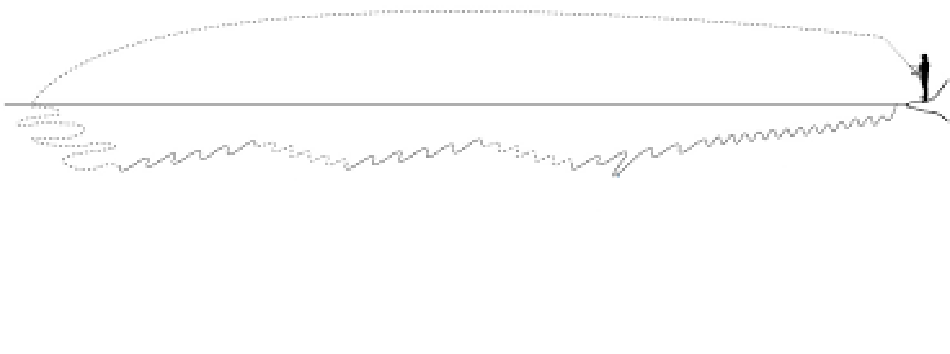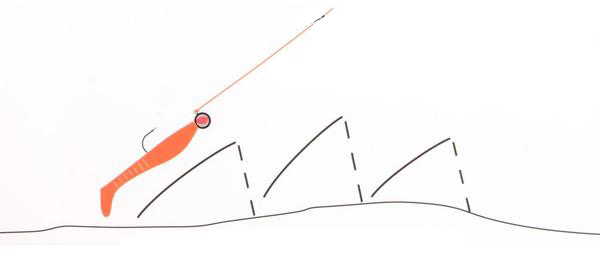
At first sight, fishing with soft lures may seem a simple and relatively basic affair. Once you've armed your lure, you might think that all you have to do is cast and reel. But to catch fish, you need to know how to adjust theanimation in the ideal way to trigger attacks.
Whether you're stalking pike, pike-perch or any other predator species, there will be subtleties. You won't reproduce the same movements whether you're fishing on the surface, on a descent or in deep water from a boat. The collection of soft lures we offer is extremely rich and varied, which is why we need to distinguish between the different ways of fishing:
- Top water, which is regularly used with a Texas hook
- Linear techniques, for versatile fishing for all anglers
- Vertical or jigging techniques during the cold season
The type of lure offered to the fish will result in different animations. Depending on the shape of the lure, you'll opt for a particular rig for maximum efficiency.
Finally, don't forget other external factors. For example, the colour of the water or its temperature should influence your presentations. Vibrations will also be more or less well accepted, depending on the pressure in your sectors. To help you choose the size and type of lure you need, follow our guide to the Top 10 best soft lures. It will give you a better understanding of the choices made by experienced anglers
Once you've got to grips with this advice and the settings, you'll need to make the right choice in your line and rod so that you're in the best position to get your kicks quickly.
Top Water animations
This is perhaps the least common of the 3 practices we're going to explain. But it proves to be a formidable weapon when it comes to tackling crowded, vegetation-rich areas.
Depending on the model of lure you use, you can animate in a linear fashion, like with a shad. This will produce a buzzing effect on the surface, which we like to use on overcast days when activity is high. When rigging, surface anglers use movements that are quite similar to fly fishing. Although the rod and line are completely different, there is a certain similarity between these two casting techniques.
You can also use the stop-and-go technique with floating lures. This involves bringing your lure back in a linear fashion and pausing. The micro-vibrations emitted can easily trigger the fish to attack. Don't hesitate to make your lure twitch with your tackle at these moments.
Alternatively, like a stickbait, you can animate a soft jerkminnow or worm with short jerks. This will tend to make the lure swim like a Wolking the dog, an action that is known to be highly effective on many predators. Here too, don't hesitate to take breaks of varying lengths and preferably use a Texas hook.
Finally, some soft lures are designed specifically for this purpose and can be used to produce a variety of often innovative swim patterns. Most of the time, the animation is already designed into the lure itself. All you need to do is cast and retrieve in a linear fashion.
Linear fishing
This is certainly the most commonly used technique, as it requires no special knowledge. All you need to know is how to cast and reel. The aim is to get your lure to move through the water without snagging. As you use the lure more and more, you'll end up choosing the depth at which you want it to swim.
Now that you've grasped the concept, you need to choose a lure and make it swim. And as you'd expect, the animations vary greatly depending on the shape, your choices and sometimes the size of the lure.
Shads or swimbaits will be the most popular. Their opposing tails will make learning much easier. In fact, it will start working on its own, simply by retrieving the line. You'll see that a simple retrieve at a constant speed can be a real weapon. You can, of course, vary the speed, accelerating or pausing to let the line sink to the bottom.
Grub also have the same tendency, although they vibrate at different frequencies. You'll have no problem targeting perch and pike, but you can also do some interesting sea fishing.
You can also turn to Jerkminnow or finess softs. These models produce minimal oscillations. Small movements of the tail can be a solution in difficult waters. Don't hesitate to jerk or twitch them to make them twirl like a fleeing fish.
Animations on the bottom
This is the last part of the water we haven't yet explored. Deep water is full of secrets for animating your soft lures. The descent phase and the colour of the lure will be important factors in your decision making.
Generally, these techniques are practised from a boat or other type of craft. This allows you to get a fish finder and to properly survey the target or known area.
You can then turn to vertical fishing. This involves placing the lure on the bottom, getting it off the ground and letting it work almost by itself thanks to the immobility of your rod and the natural action of the drift. You will repeatedly tap your rig on the bottom, and then reposition yourself.
The first few hours are a little difficult, but the violent bites of the pike-perch will soon make you get used to these minimalist movements. Prefer the cold season for these animations, as the fish are looking for the warmer water on the bottom at that time, but also a fine line and the advice of a regular to quickly find the most productive areas.
With this information, you, as an angler, will be able to perfect your technique and quickly push back the size mark of your record fish, both at sea and in freshwater.
Our other articles on soft lures:
